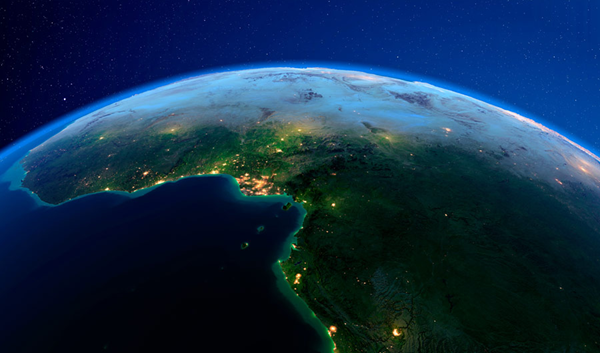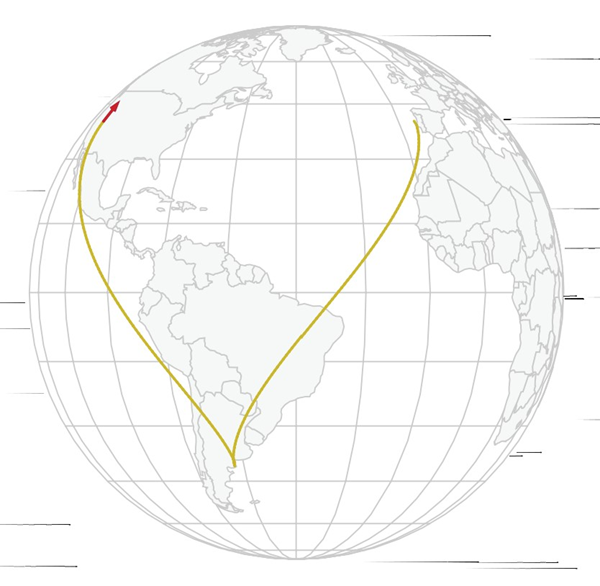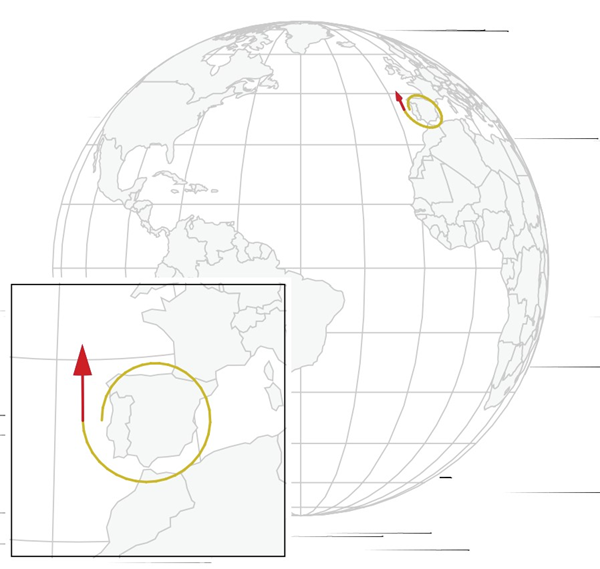(Inside Science) — Earth might look like a sphere, but it’s actually an “oblate spheroid” — the planet is slightly squished, making the circumference of the equator bigger than the circumference through the poles. Clouds, ocean currents, and long-range missiles all would behave differently if Earth were perfectly spherical.
This bulge exists because of a force created by Earth’s rotation. As a result, a person on the equator is over 13 miles farther from Earth’s center than a person on the North Pole is. That difference is more than double the distance between sea level and the top of Mount Everest, but on a planetary scale, this bulge is virtually imperceptible. Boyd Edwards, a physicist at Utah State University in Logan, said it’s roughly equivalent to a single layer of duct tape around a spherical volleyball.
Earth is so close to being spherical that physicists sometimes will treat it as such in their models, said Edwards. But this simplification can cause significant errors when calculating motion on Earth’s surface.
In a paper published in August in the American Journal of Physics, Edwards and his brother John Edwards, a computer scientist who also is at Utah State, demonstrate how Earth’s spheroidal shape affects motion by envisioning an Earth that is completely smooth and covered in frictionless ice and asking what would happen if you shot a hockey puck across its surface.
A hockey player on a spherical Earth
Imagine that a hockey player standing somewhere in Portugal shoots a puck directly north at around 100 miles per hour. Where will the puck go? From the player’s perspective, the puck moves north at first.
Then, on a spinning sphere, the centrifugal force, an outward force that arises from the spinning, pushes the puck toward the equator. After traveling about 50 miles north, the puck reverses its direction and starts to move south.
At the same time, the Coriolis force, another force that emerges in rotating systems, drives the puck to the west. Part of the reason is that as Earth spins, objects closer to the equator are moving faster than objects closer to the poles, since those points have to travel farther to complete an orbit in the same amount of time. (It’s similar to how a track athlete in an outside lane has to run faster to keep up with a runner in an inside lane.) As the puck travels south, the land beneath it is moving faster eastward, so the puck appears to move west.
Furthermore, as the puck gets closer to the equator, it gets farther from Earth’s axis of rotation, and to conserve angular momentum, the speed at which it moves to the east slows. It’s the same reason why a figure skater spins faster with their arms tucked in, and slower with their arms outstretched. This slowing further pushes the puck to the west.
As the puck travels to the southwest, it speeds up until it crosses the equator, at which point it starts to slow, as the centrifugal force pulls it back to the equator again. The puck gets as far south as Argentina, exactly as far below the equator as its highest point above it, before returning to the north. The puck will continue to zigzag between the northern and southern hemispheres while moving to the west.
A hockey player on a spheroidal Earth
On a spheroidal Earth, the centrifugal force and gravity cancel each other out, leaving just the Coriolis force to affect the puck’s movement. The Coriolis force is what gives hurricanes and cyclones their circular movement, and the puck behaves similarly, rotating clockwise while hovering near Spain and Portugal.
The puck would move differently if the hockey player started at a different location and shot the puck in a different direction, and you can play around with different starting points in this visualization software designed by the paper’s authors. But these examples show the profound effect Earth’s shape has on movement on its surface.
Boyd Edwards said that Earth’s spheroidal shape has implications for aviation, meteorology, oceanography and other fields, since the Coriolis force will affect motion, but the centrifugal force will not.
“But more importantly, I think it’s fundamental for us to understand everything there is to understand about our Earth,” he said. “This is the only planet that we’re likely to live on.”
Editor’s Note: The American Journal of Physics is published by the American Association of Physics Teachers, a member society of the American Institute of Physics. Inside Science is an editorially independent publication of the American Institute of Physics.
This story was originally published with Inside Science. Read the original here.












